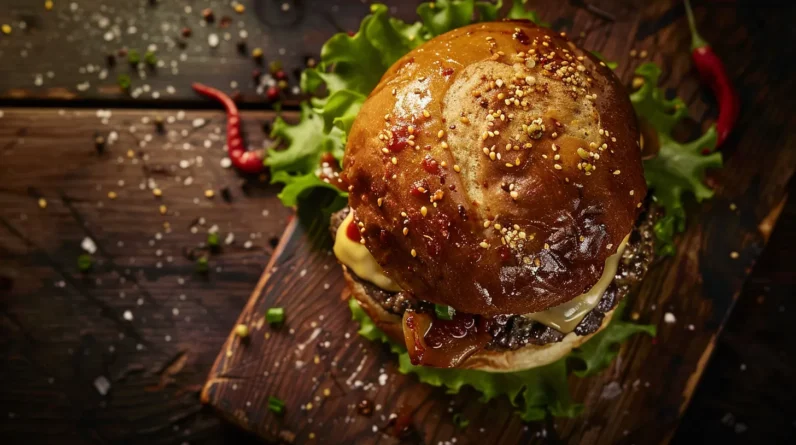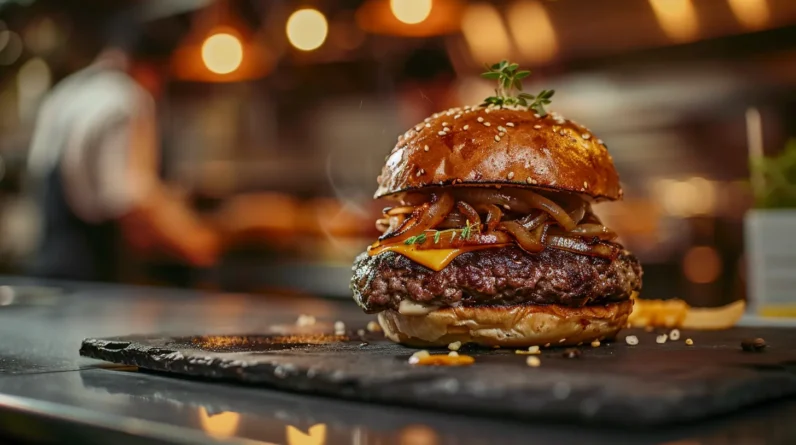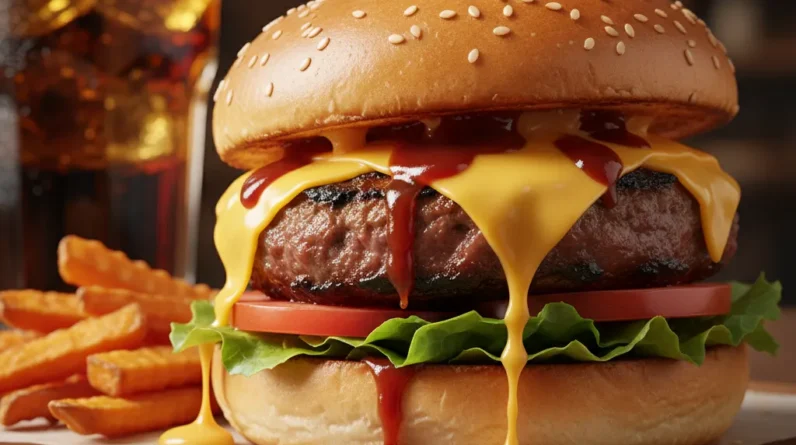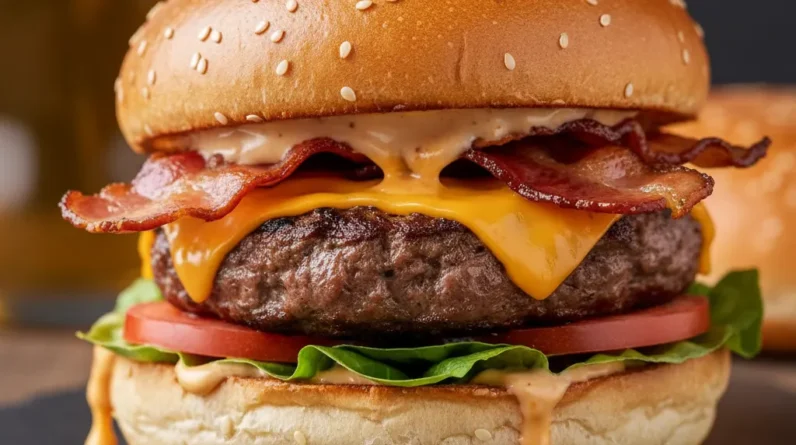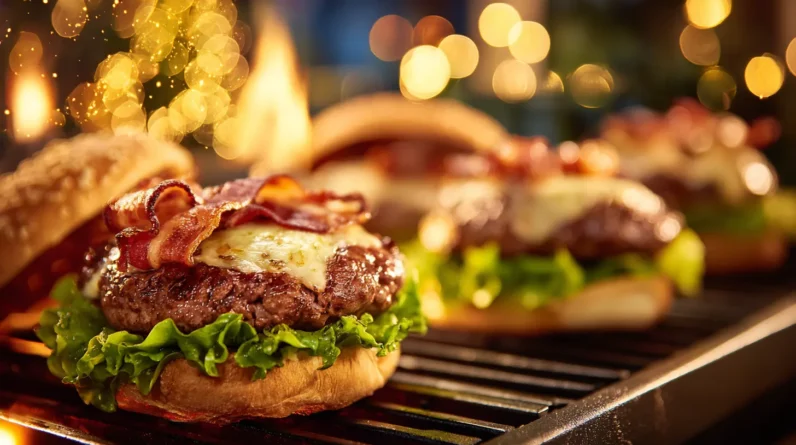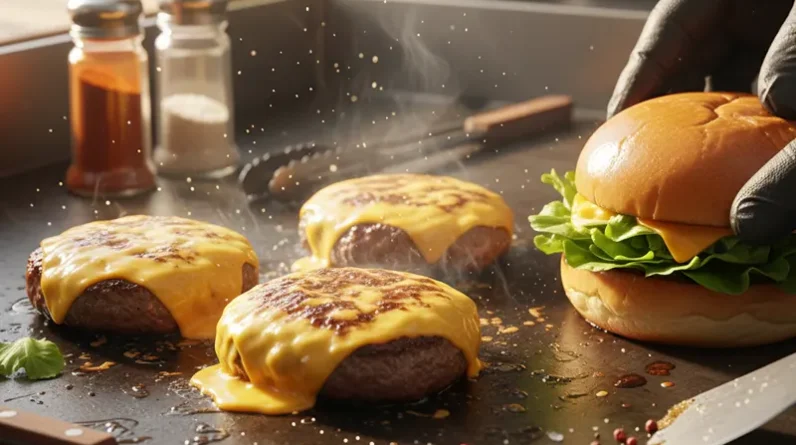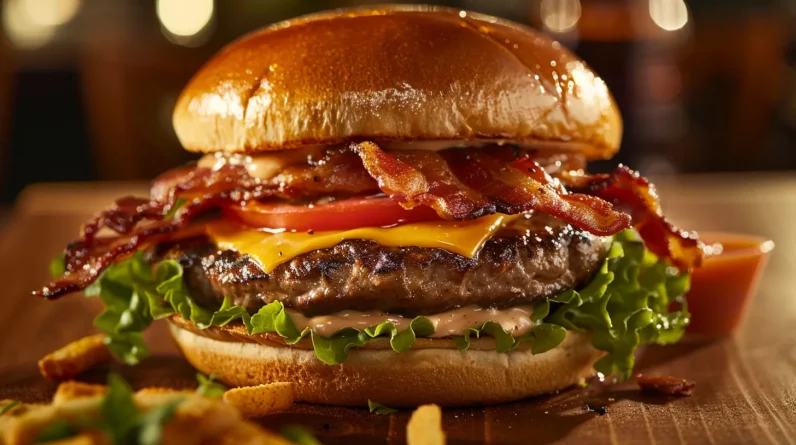
We’ve found that crafting exceptional burgers requires attention to key layers, including patty composition and texture, cooking technique, and bun selection. We consider temperature control vital for ideal texture and flavor. By mastering these elements, we can create a harmonious balance of texture and taste. As we explore these layers further, you’ll discover the intricacies that set great burgers apart.
Patty Composition and Texture
We’re diving into the domain of patty composition and texture, an essential aspect of burger layers that substantially impacts the overall dining experience. We examine how protein sources, such as meat, plant-based, or hybrid options, affect the patty’s texture. Moisture content is essential, as it influences juiciness and texture. Different protein sources alter moisture retention and cooking loss. For instance, pea-based patties tend to have higher moisture content than soy-based ones. Understanding these factors helps us craft patties that balance texture and flavor, making for a superior burger experience. We consider these variables to optimize patty composition.
Patty Temperature and Cooking Technique
As we shift from patty composition and texture to cooking techniques, it’s essential that we master the art of managing patty temperature, a crucial factor that can make or break the overall quality of our burgers. We must optimize our grill to medium-high heat, around 350-400°F, for ideal Maillard browning. Our cooking methodology involves precise temperature control, flipping, and resting to achieve desired doneness. By mastering grill optimization and cooking methodology, we can guarantee our burgers are cooked to a safe internal temperature, while maintaining juiciness and flavor, to create a truly exceptional dining experience.
Bun Selection and Preparation
When selecting a bun, the type and characteristics of the bread play a essential role in enhancing the overall burger experience. We consider various bun varieties, such as brioche, whole wheat, and pretzel, each offering unique textures and flavors. Preparation methods are also pivotal, as toasting and warming can substantially impact the bun’s texture and freshness. We evaluate the merits of different buns, weighing factors like softness, crunch, and flavor profile, to determine the best match for our burger. Effective bun selection and preparation methods can elevate our burgers, while poor choices can compromise the entire experience.
Order and Assembly for Texture Balance
To achieve the perfect burger, we’ve got to think about the order and assembly of its components, since this directly impacts the texture balance. We consider layering importance and structural balance. Key considerations include:
- Placing sauce on the bottom bun for a moisture barrier
- Adding crunchy elements like pickles and onions
- Positioning the patty with melted cheese centrally
- Using leafy greens for crisp texture. This order guarantees a balanced texture, with alternating soft and crunchy elements, maintaining structural balance and texture contrast, which is vital for a great burger experience.
Flavor Layering and Ingredient Interaction
We’ve established that texture balance is essential for a great burger experience, and now we’re focusing on the intricacies of flavor layering and ingredient interaction. We’re analyzing how distinct flavor profiles interact, creating complexity and depth. Ingredient synergy is key, as each component contributes unique notes that combine to enhance the overall taste. Flavor layers, from aromatics to melted cheese, work together to create a rich experience. We consider heat elements, sauces, and fresh vegetables, evaluating how they intersect to form a harmonious balance of flavors, ultimately achieving mastery of flavor layering through deliberate ingredient synergy and refined flavor profiles.
Presentation and Final Touches Affecting Perceived Texture
Presentation plays an essential role in shaping our perception of a burger’s texture, and it’s the visual cues that first grab our attention. We consider visual presentation and final touches that enhance texture. Key factors include:
- Color uniformity and resemblance to freshly cooked meat
- Surface sheen and slight charring
- Visible structural elements like grain direction
- Even distribution of juices. These elements influence our expectations of tenderness or firmness, making final touches pivotal in perfecting the burger’s texture.
Burger Construction Essentials
As we explore the domain of burger construction, it’s clear that several key elements work together to create a harmonious balance of texture and flavor. We consider food safety, ensuring patties are cooked to the right temperature. Following burger trends, we use techniques like lightly toasting buns to prevent sogginess. Proper layering, including sauce and greens, adds texture and flavor. By mastering these burger construction essentials, we can create a cohesive, delicious burger that meets our high standards, while also prioritizing food safety and staying on top of the latest burger trends.
Conclusion
We build, we craft, we balance, creating burgers that delight. We layer textures, temperatures, and techniques, combining flavors and ingredients. We select, we prepare, we assemble, ensuring each bite is perfect. We observe, we adjust, we refine, making every burger a masterpiece. We prioritize, we execute, we serve, delivering a culinary experience.


